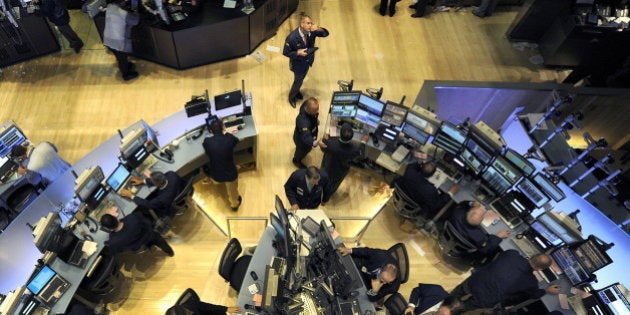
An Indian-origin futures trader has been arrested in the U.K. and faces extradition to the U.S. for his alleged role in the May 2010 “flash crash” which wiped billions of dollars off the value of U.S. shares in minutes.
Navinder Singh Sarao (37) was arrested by British authorities yesterday at the request of the U.S. Department of Justice and the U.S. is requesting his extradition.
Mr. Sarao was charged in a federal criminal complaint in the Northern District of Illinois in February 2015.
The complaint charges him with one count of wire fraud, 10 counts of commodities fraud and commodities manipulation and one count of “spoofing”, a practice of bidding or offering with the intent to cancel the bid or offer before execution.
The U.S. Commodity Futures Trading Commission (CFTC) also announced the unsealing of a parallel civil enforcement action against Mr. Sarao and his firm Nav Sarao Futures Limited.
The CFTC complaint charges him with unlawfully manipulating, attempting to manipulate, and spoofing with regard to the E-mini S&P 500 near month futures contract.
The E-mini S&P 500 is a stock market index futures contract based on the Standard & Poor’s 500 Index and is one of the most popular and liquid equity index futures contracts in the world. The contract is traded only at the Chicago Mercantile Exchange (CME).
According to allegations in the criminal complaint, Mr. Sarao allegedly used an automated trading programme to manipulate the market for E-Mini S&P 500 futures contracts on the CME.
From April 2010 to present, he and his firm have profited over $40 million in total from the E-mini S&P trading.
Mr. Sarao’s alleged manipulation contributed to a major drop in the U.S. stock market on May 6, 2010, that came to be known as the “Flash Crash”. On that date, the Dow Jones Industrial Average fell by approximately 600 points in a five-minute span, following a drop in the price of E-Minis.
According to the complaint, Mr. Sarao allegedly employed a “dynamic layering” scheme to affect the price of E-Minis.
By allegedly placing multiple, simultaneous, large-volume sell orders at different price points — a technique known as layering — Mr. Sarao created the appearance of substantial supply in the market.
As part of the scheme, he allegedly modified these orders frequently so that they remained close to the market price, and typically cancelled the orders without executing them. When prices fell as a result of this activity, Mr. Sarao allegedly sold futures contracts only to buy them back at a lower price.
“Today’s actions make clear that the CFTC, working with its partners on the criminal side, will find and prosecute manipulators of U.S. futures markets wherever they may be,” CFTC Director of Enforcement Aitan Goelman said.
In its ongoing litigation, the CFTC is seeking permanent injunctive relief, disgorgement, civil monetary penalties, trading suspensions or bans, and payment of costs and fees.
U.S. District Judge Andrea Wood has issued an order freezing and preserving assets under Mr. Sarao and his firm’s control. The court has scheduled a hearing for May 1, 2015, on the CFTC’s motion for a preliminary injunction.



Contact HuffPost India